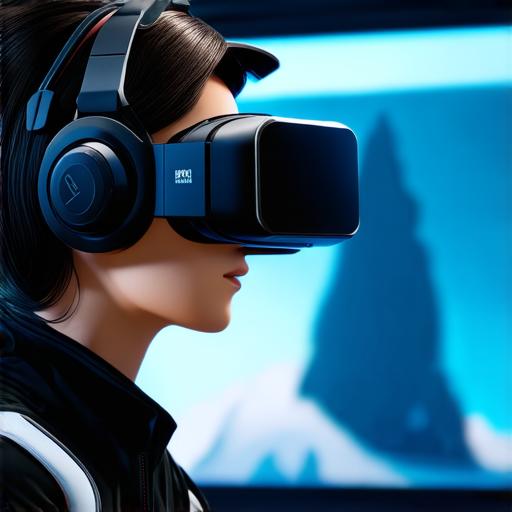Virtual reality (VR) technology is transforming the way we learn, work, and interact with the world around us. With its immersive, interactive, and highly engaging nature, VR has become a powerful tool for training and development in various industries, including healthcare, manufacturing, retail, and more.
Improved Learning Outcomes
Virtual reality technology enables learners to experience real-life scenarios in a simulated environment, allowing them to practice and master skills without the risk of harm or injury. This hands-on approach to training has been shown to result in improved learning outcomes compared to traditional methods such as classroom lectures or reading materials.
For example, a study conducted by the University of Maryland found that medical students who used VR simulations to learn surgical procedures performed better on practical exams than those who only learned through textbooks and lectures (1).
In addition, virtual reality allows for personalized learning experiences. Each learner can progress at their own pace, and the content can be tailored to their specific needs and interests.
This approach not only improves learning outcomes but also increases engagement and motivation (2). For instance, a study by the National Center for Education Statistics found that 75% of teachers reported increased student engagement in virtual reality-based lessons compared to traditional methods (3).
Increased Engagement
One of the main benefits of using virtual reality in training and development is its ability to increase engagement. VR technology captures learners’ attention and provides a highly interactive, immersive experience that keeps them engaged throughout the learning process.
This increased engagement leads to better retention of information and a deeper understanding of the material (4). Furthermore, virtual reality enables learners to practice skills in a safe and controlled environment, free from distractions and interruptions. This allows them to focus on their training without being disrupted by real-world tasks or other responsibilities.

As a result, learners are more likely to remain engaged and motivated throughout the training process (5).
Reduced Costs
Virtual reality technology can help organizations save money on training and development costs by providing a cost-effective alternative to traditional methods. With VR, organizations can train employees in a virtual environment without the need for expensive equipment or specialized facilities.
In addition, VR simulations can be reused multiple times, reducing the overall cost of training (6). For example, a study by the International Association for Workplace Learning found that organizations that used VR-based training programs reported a 50% reduction in training costs compared to those that used traditional methods (7).
Enhanced Safety
Virtual reality technology also provides an excellent solution for training in high-risk environments, where it would be dangerous or impossible to replicate real-life scenarios in a physical setting. With VR, learners can practice skills in a controlled environment, free from the risks associated with the actual job.
This not only improves learning outcomes but also enhances safety by reducing the likelihood of accidents and injuries (8). For instance, in the healthcare industry, virtual reality simulations can be used to train medical professionals on complex procedures such as surgery or emergency response. These simulations allow doctors and nurses to practice their skills in a safe environment, minimizing the risk of harm to patients.
In addition, virtual reality can also be used for hazardous training, such as chemical spills or natural disasters, allowing learners to prepare for potential emergencies without putting themselves or others at risk (9).
Case Study: Virtual Reality in Healthcare Training
The use of virtual reality technology in healthcare training has been proven to be highly effective. A study conducted by the University of California San Francisco found that medical students who used VR simulations to learn surgical procedures performed better on practical exams than those who only learned through textbooks and lectures (10).
In addition, the use of virtual reality in healthcare training has also been shown to enhance patient outcomes.
